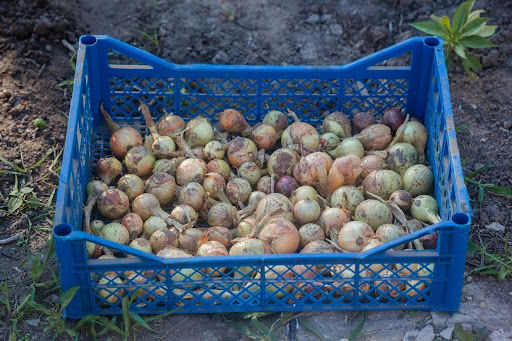The science linking the relationship between crop characteristics and pathogen survival
- Allissa Conley

- Aug 12
- 2 min read
Updated: Aug 13
One requirement of the Pre-Harvest Agriculture Water Assessment is that farmers are required to identify crop characteristics of the covered commodities that they grow in order to help determine how prone they are to things like surface adhesion or internalization of hazards. This article provides a list of science-based research articles to help farmers take a deeper dive into those crop characteristics and how they interact with possible contaminants.

When I think of a crop characteristic, I think of an apple being smooth and waxy, a strawberry having little pits with seeds, called achenes, and root vegetables having a rougher texture that dirt loves to stick to. But what does this actually mean when it comes to how pathogens and contaminants interact with these crops? North Bay Produce compiled a great wealth of scientific articles that deep dive into this exact idea. With this month’s focus being berry crops, the following articles can be used by farmers with berry crops to help complete the crop characteristic portion of their pre-harvest agricultural water assessments.
Article list:
Blueberries
As blueberries are smooth, surface adhesion is less likely. If adhesion occurs, it is more likely to occur at the calyx than on the skin.
§ Inactivation of Escherichia Coli O157:H7 and Salmonella Enterica on Blueberries in Water Using Ultraviolet Light
Key takeaway: UV light has microbial effects and can act as a sanitation step. Blueberries were dip- or spot-inoculated with E. coli or Salmonella. E. coli was easiest killed on spot-inoculated blueberries with a wet UV treatment whereas dip-inoculated were the hardest to treat with significantly less reduction. Wet UV treatment overall was more effective than dry UV treatment. Findings suggest UV treatment could be used in blueberries in place of chlorine washing.
§ Examination of attachment and survival of Toxoplasma gondii oocysts on raspberries and blueberries
Key takeaway: This study demonstrates that T. gondii cells can bind to berries and can be recovered by studies done on mice. Another finding is that raspberries retain more inoculated cells than blueberries do.
Raspberries
Hair and waxes on drupelets make raspberries susceptible to surface adhesion.
§ The Impact of Pulsed Light on Decontamination, Quality, and Bacterial 3 Attachment of Fresh Raspberries
Key takeaway: Surface structure of raspberries affected the attachment of bacterial cells, and the surface roughness provided protection for pathogenic bacteria.
§ Scientific Opinion on the risk posed by pathogens in food of non-animal origin. Part 2 (Salmonella and Norovirus in berries)
Key takeaway: There is limited information to suggest that pathogens internalize into berry fruit or plants.


